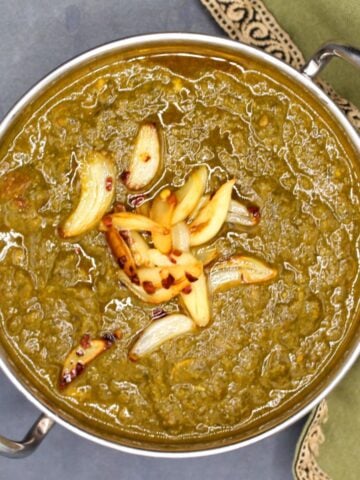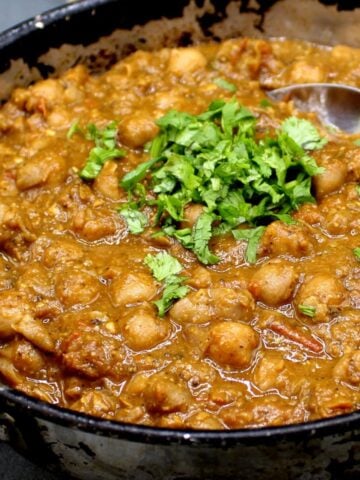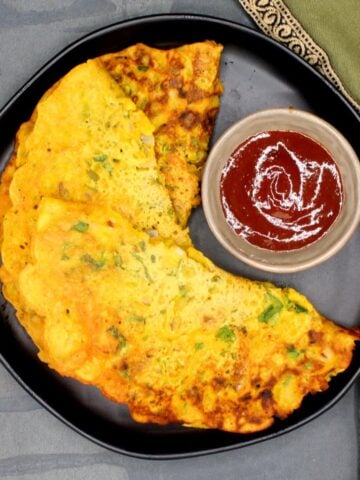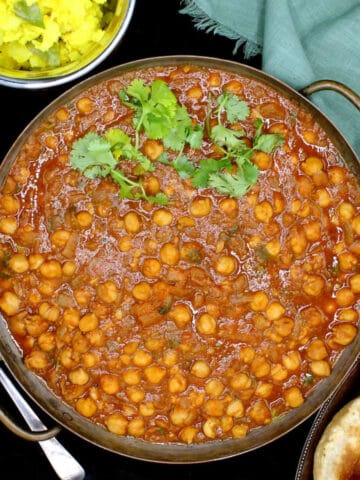A stuffed aloo paratha or gobi paratha is delicious. But when I want a paratha that is just as tasty and nourishing but one that also comes together quickly, I turn to simpler recipes like spinach paratha, where the greens are simply mixed in with the flour. This methi paratha meets that bar, and it’s so delicious, you might want to eat it at every meal. And you can, because it is healthy enough and versatile enough to be served at any meal.
Why you should make methi paratha
A methi ka paratha is likely one of the healthiest foods you can eat, because all ingredients that go into it are so good for you: whole wheat flour, chickpea flour or besan, and fenugreek greens or methi. Also mixed into the paratha are healthy spices like turmeric, ginger, garlic and ajwain or carom seeds. Methi’s pleasant, mildly bitter flavor is prized in Indian cuisine. This is also a superfood that has prebiotic fiber and can improve cardiovascular health and lower blood sugar, among a host of benefits. I love methi in vegetable sides like methi matar malai, baingan methi sabzi, and methi dal. Those who cook or eat Indian food outside India are likely familiar with the dried version of fenugreek leaves, kasoori methi, used to flavor popular restaurant style dishes like vegan butter chicken and tofu tikka masala. Traditionally methi paratha is made with ghee, which clogs this healthy food with cholesterol. But in this vegan version we use a pat of oil or a spritz of cooking spray and no cholesterol, thank you! My methi paratha recipe is simple and even beginner friendly, but please read and follow instructions carefully. The only obstacle I envisage is a newbie’s inability to roll out perfectly round parathas, but honestly, who cares? It’s your kitchen, make all the mistakes you want to. How else will you learn? And so long as the parathas taste good, who cares if they look like the Indian map?
How to make methi paratha
Make the dough
Roll the paratha
Cleaning and trimming methi greens
Methi leaves are usually sold in bunches with their roots attached, which means they are notoriously gritty. To prep methi for cooking, trim the roots off right away and discard them. Fill a large bowl with water and swoosh the methi greens in it, allowing any grit to fall to the bottom of the bowl. Discard the gritty water and wash again. I usually repeat this three times. Check to get new recipe updates by email.
Trim the methi greens by picking the leaves and discarding the tough, fibrous stems. Any small, soft stems attached to the leaves are fine. Chop the methi leaves fine for this recipe.
Recipe card
More north Indian recipes

















